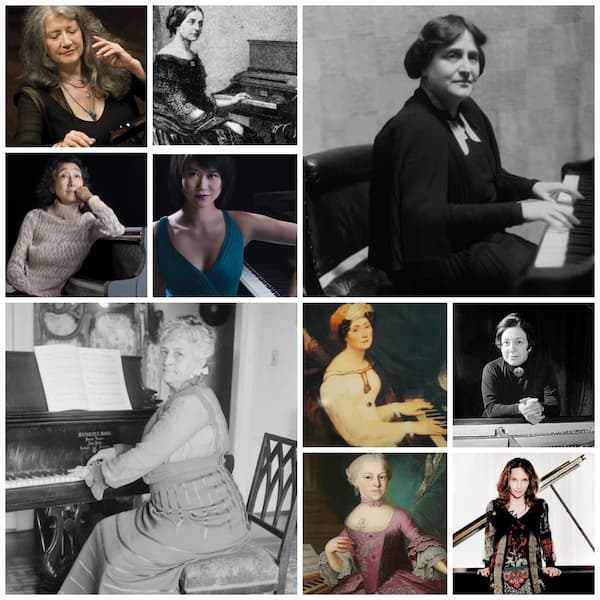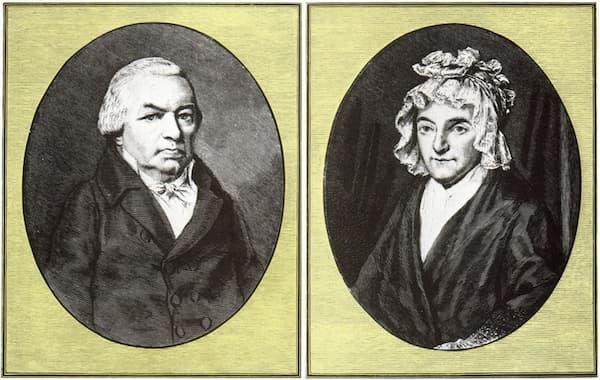All music pages present a problem for the performer: how do you get to the other side? If you’re a pianist in a performance, you have a page-turner. A page-turner is a musically literate person who sits just behind you to your left and, a couple of measures before the music on the first page ends, quickly stands, turns the top right corner of the page so that you can finish what’s on the bottom right corner of the page, turns the page, makes sure it’s steady and sits again. It’s a delicate dance for the turner – too early or too late, and your pianist might be in trouble.

Frank Levy, pianist, with Alan Amit, page tuner
For an organist, the problem is compounded by the organ stops. Your page turner not only has to turn pages, but also be ready to change the organ stops. If it’s only page turning, the turner will be seated, but if more is involved, then the turner will be standing by the organist’s side. If it’s particularly complicated, there may be a stop puller on each side of the organist.
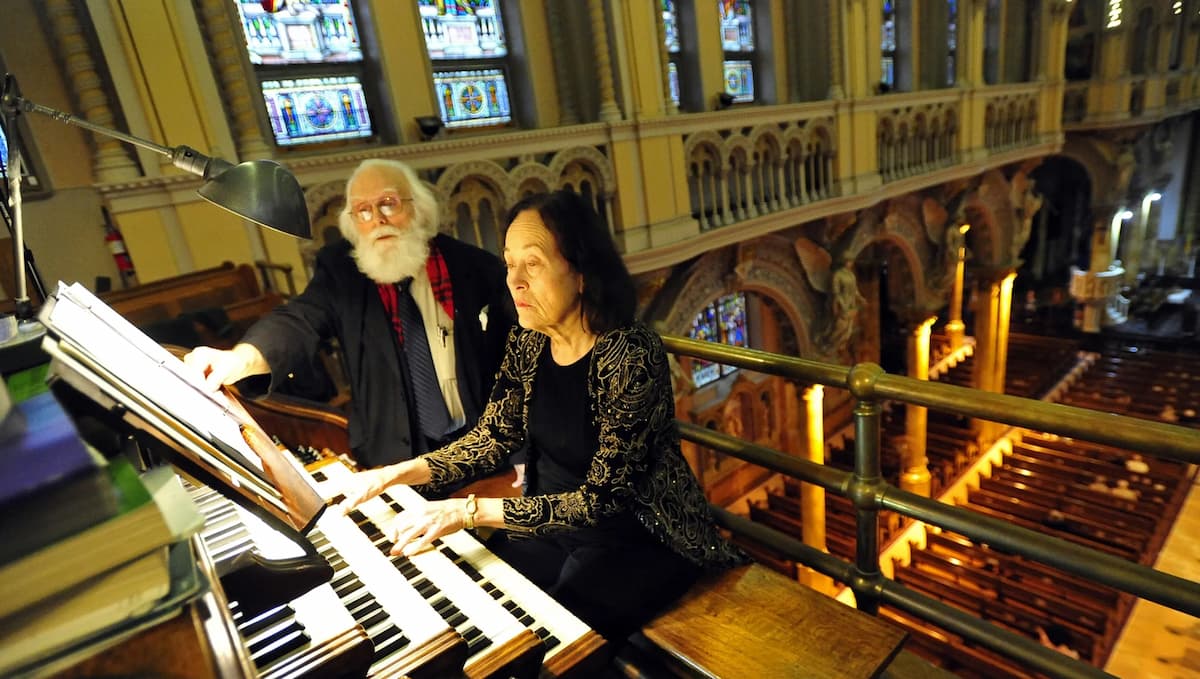
Organist Rosalind Mohsen with page turner
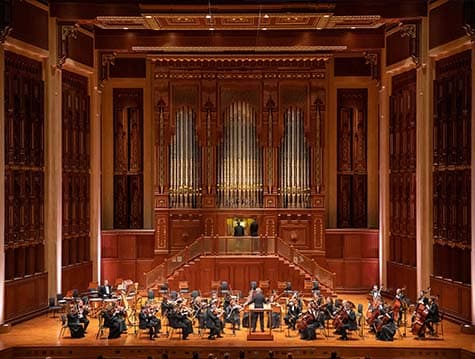
Pipe Organ with standing page tuner and stop puller, 2021 (Royal Opera House Muscat) (Photo by Khalid al-Busaidi)
Remember that a page turn isn’t always a page turn – some music has da capo markings, i.e., go back to the beginning. That might be one page turn or several. A good page-turner not only has to keep track of where the performer is in the music but also where the composer is in the piece itself.
With the advent of digital scores – large- or small-scale tablets where you can keep ALL your music – the problem has changed but not necessarily gotten better. To turn the page, you need to signal the tablet. At first, performers would hook up a foot pedal via a cable that would permit them to do the page turns.
Mozart Clarinet Quintet in A Major, K. 581
First violinist Nicholas Kitchen with the Borromeo String Quartet and his foot operated page-turner.
With Bluetooth, there is no longer a need for physical cables, but you do need to ensure that everything is working. Where your digital score needs to be charged, your paper score doesn’t.
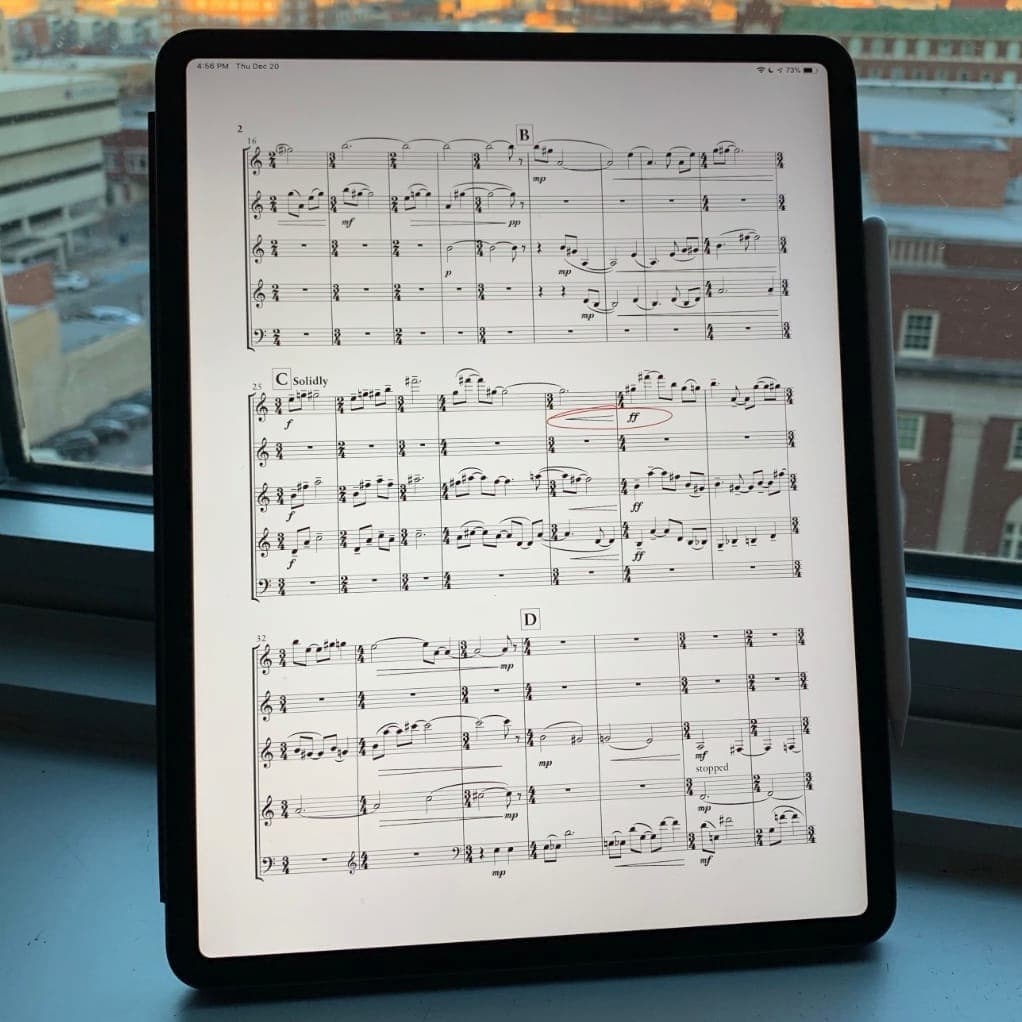
iPad Score
What about our poor pianist, however? There may be no free hand or even a free foot to hit the devices. We were at a concert the other day where the pianist explained that, since COVID distancing made even a page-turner a problem for sitting too close, he’d chosen the best Bluetooth options. His score was digital. However, the page-turner wasn’t sitting a foot behind him but, rather, in the first row of the audience, operating the page-turning device and following the score on his own digital device.
There are also new technologies that use the camera on a digital score to do a page turn with simply a head motion or eye blink, using an app called ForScore for 1 digital score or CUE for coordinating two digital pads.
ForScore – Face Gesture for page turning demonstration
Using facial gestures to turn the page
Two organists who use it did say, however, that it was possible to prank a player by standing behind him and making the turn-page gesture and changing his pages at entirely the wrong time – during practice only, of course!
For performers who do not use page-turners, i.e., almost everyone who isn’t a pianist, several solutions have presented themselves. In some cases, the performer copies out the music they need to play after the page turn and tapes it to the bottom of their page as a foldout. This might involve elaborate preparations before a performance where the score is opened and the various foldouts are opened before playing commences.
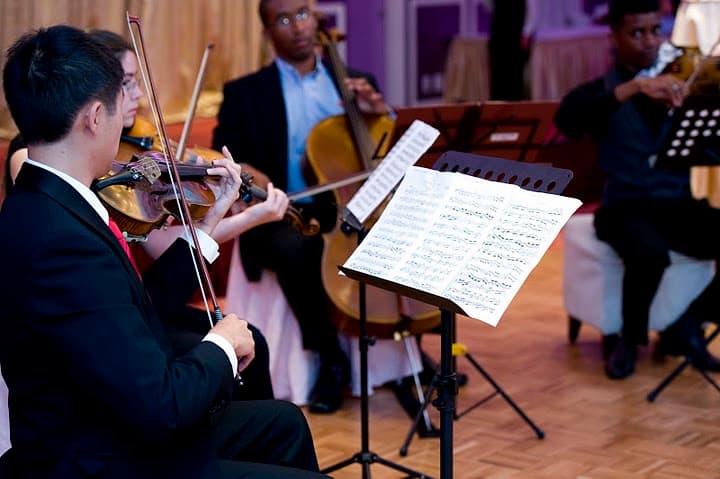
String quartet with extra pages laid out, 2010 (Photo by Pf1988)
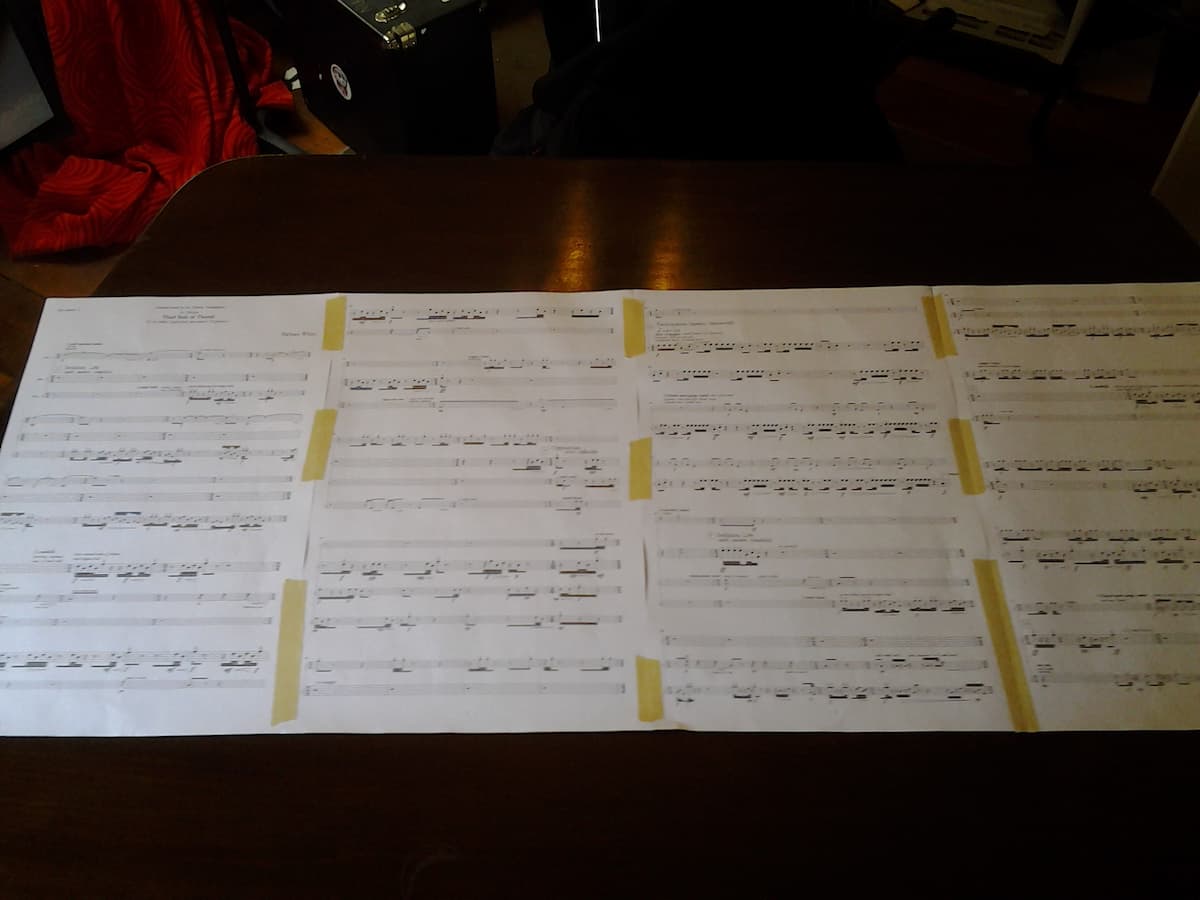
Music score taped together (Photo by Nicholas Tolle)
On a lightweight stand, this can often create an unbalanced score that’s in danger of crashing to the ground when touched. Sometimes, you’ll see performers lay their music out over multiple stands so that they don’t have to turn a page at all.
If you watch an orchestra performing, you’ll see that the second player on the stand is responsible for page turns. Sometimes, you’ll see the string players stabilizing the music with their bows if it threatens to flip back.
In this performance with Christian Tetzlaff and Lars Vogt, both suffered music score crises, first with the violinist’s score falling to the ground and, a bit later, the pianist’s score coming apart during a page turn. Both were rescued by the page-turner, Anna Reszniak, who was applauded by the audience at the end. The music never stopped, and the page-turner kept an eye on everything.
Page turning Incident Tetzlaff Vogt with guest star Anna Reszniak
You don’t always need your music there – sometimes, it’s just a visual warm blanket. You know the music…but what if something goes wrong? Shock horror! It’s OK, the score is there….
For more of the best in classical music, sign up for our E-Newsletter


